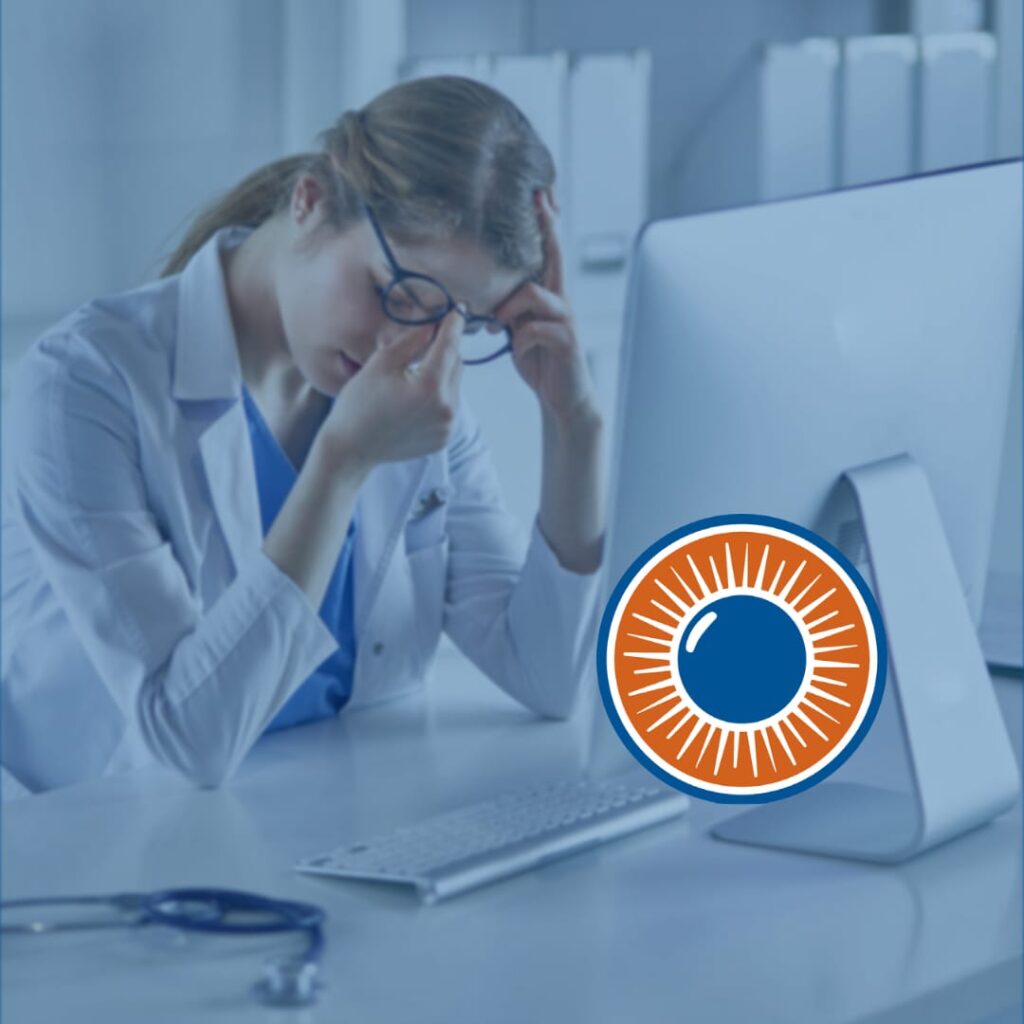Eye strain? Blue light glasses won’t help. – Dr. Marc Robinson

Despite the marketing, blue light glasses are as effective as placebo.
Almost every day in our office I hear something along the following lines: “My eyes get tired on the computer… I ordered these blue-blocking glasses and they don’t seem to be helping enough.” Unfortunately, that’s because they aren’t helping much at all.
Research shows that “blue blocker” glasses are as effective as placebo glasses in reducing asthenopia or eye strain. In reality, asthenopia is caused by your visual system not being able to sustain focus at your working distance in one or both of your eyes. (1)
In other words: you need real glasses.
Regardless of whether your screens were to emit red light, green light or blue light, you’ll get eye strain if you’re having trouble sustaining focus at your computer depth; especially if lighting conditions and screen brightness levels are not optimal.
Historically, the working environment involved a lot more walking around, a lot more face-to-face meetings and a lot less having to constantly focus on a stationary, bright object so close to the eyes. As we age, there is also a natural decline in focusing ability. With an increased demand on the visual system, underlying visual conditions such as astigmatism, hyperopia, and accommodative dysfunction can further increase this demand and make it hard to sustain focus on a computer or tablet throughout the day. It would be convenient to blame blue light, but the problem is more complex and specific to each individual.
There have been many studies over the past 10 years on the potential effects of blue light; the clear scientific consensus is that the blue light emitted from our screens does not damage our eyes or macula in any significant way. The opposite is true for ultraviolet light (UV light). Research confirms that UV light, smoking, and genetic factors do contribute to potential damage and degeneration of the macula and retina. If your concern is more about eye health, you are much better off wearing sunglasses while outside than worrying about blue lights. (2)
So how do you alleviate eye strain?
A thorough eye examination is recommended to identify the underlying cause. Real solutions include prescription glasses tailored to your workspace and visual demands, use of lenses made with less distortions, reduced glare, and even illumination in the workspace. (3)
If your eyes are straining, it’s time to have them examined and corrected properly.
Marc Robinson, OD
Gainesville Vision
(352)-448-3932
- Vagge A, Ferro Desideri L, Del Noce C, Di Mola I, Sindaco D, Traverso CE. Blue light filtering ophthalmic lenses: A systematic review. Semin Ophthalmol. 2021 Oct 3;36(7):541-548. doi: 10.1080/08820538.2021.1900283. Epub 2021 Mar 18. PMID: 33734926.
- Lawrenson JG, Hull CC, Downie LE. The effect of blue-light blocking spectacle lenses on visual performance, macular health and the sleep-wake cycle: a systematic review of the literature. Ophthalmic Physiol Opt. 2017 Nov;37(6):644-654. doi: 10.1111/opo.12406. PMID: 29044670.
- Sheedy, J. E., & Shaw-McMinn, P. G. (2003). Diagnosing and treating computer-related vision problems. Butterworth-Heinemann.
